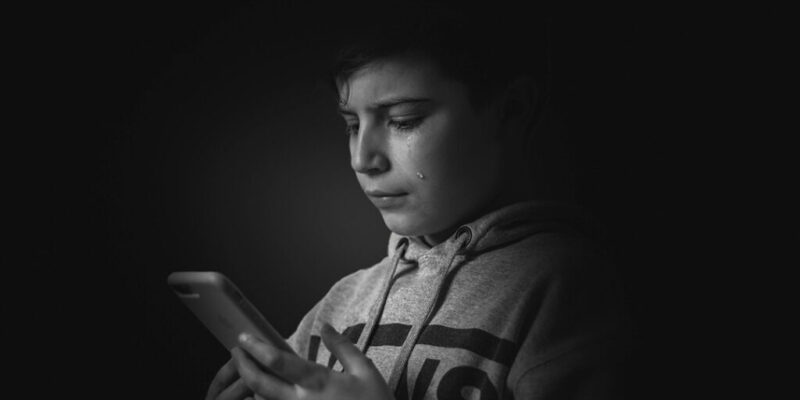Ana is a psychologist in private practice in Philadelphia. She is the mother of three children and she enjoys outdoor adventures.
At what age should we let kids use social media?
As a clinical psychologist and mother of three, I’ve been grappling with this question. My oldest child is 13 and he claims that everyone has Snapchat except him.
Looking at the scientific research, the wider mental health trends, and what I know about adolescent development, I’ve decided he will have to wait until he’s at least 15.
Here’s why:
First, there are concerning trends in adolescent mental health. The rates of teen anxiety, depression, and suicide have risen significantly over the last decade. Numerous studies show that teens report persistent feelings of sadness and hopelessness at significantly higher rates and that mental health professionals are diagnosing higher rates of depression. Most alarming is that the suicide rate for 10-14 year olds increased 139% for girls and 70% for boys over the last decade. And what does this have to do with social media?
Adolescent mental health started to decline sharply in 2012, which is the year that we started using the word “selfie” and the year that Facebook acquired Instagram.
Is there evidence that social media has played a role in these worrisome mental health trends?
Yes.
You may recall that Facebook was initially only for college students and was rolled out at different colleges at different times over the course of two years before opening up to the general public. One study found that the rates of anxiety increased by 20% and the rates of depression increased by 7% at each college in the year following the introduction of FB.
Several recent studies actually demonstrate causation, not just correlation between social media use and decreased mental health, and the apparent pathway is social comparison. In other words, use of social media causes people to engage in more social comparisons and fear of missing out (FOMO) and this in turn increases depressive symptoms and decreases self-esteem, body image, and self-perceived social acceptance.
And it has been found that the harmful effects of social media are stronger (worse) for girls.
Some of the studies I just referenced were done on young adults, and it’s important to consider that there are several reasons why social media may affect adolescents even more than it affects adults. During adolescence, the brain regions associated with attention, feedback, and reinforcement from peers become more sensitive as teens navigate identity formation, acceptance, and social status. This is a normal part of adolescent development, but with so many peer interactions occurring online for all to see and possibly even enshrined forever on people’s social media feeds, the stakes seem higher than they were pre-social media. If adults feel pressure to curate a certain image on social media, of course it’s even more fraught for teens.
Teens have always had a tendency to think they have an audience that notices their every blemish, and we used to try to quell their anxieties by telling them that no one is paying nearly as much attention to them as they think. Now that argument doesn’t work.
Social media, which started out as a vehicle for social connection seems to have turned into a way of quantifying social status.
So why do I recommend waiting until age 15?
One large study in the U.K. found developmental windows of increased sensitivity to the harmful impact of social media. Apparently, the onset of puberty and the onset of adulthood are especially vulnerable times: age 11-13 for girls, age 14-15 for boys, and age 19 for all genders.
I’m under no illusion that we can control our children’s online activity at age 19, but let’s try and hold out until at least age 15. When many teens in a community are on social media, it impacts everyone negatively, even those who don’t use it, so I think it’s worth thinking through this together as a community of parents. Most of us have felt the dopamine-fueled pull of social media on our adult brains, and I doubt we will regret holding out a little longer before unleashing it onto our kids.
Adolescence, with all its developmental tasks and hormones is certainly hard enough.
References:
https://www.nature.com/articles/s41467-022-29296-3(Developmental windows)
https://pubmed.ncbi.nlm.nih.gov/27940701
(national trends depression)
https://www.cdc.gov/childrensmentalhealth/data.html
(national trends anxiety)
https://stacks.cdc.gov/view/cdc/101761
(national trends suicide)
Makarin, Alexey. American Economic Review, Volume 112, No. 11, 2022
(Facebook rollout study)
Kleemans, Daalmans, Carbaat, & Anschütz (2018). Picture Perfect: The Direct Effect of Manipulated Instagram Photos on Body Image in Adolescent Girls. Media Psychology.
(manipulated photos on IG lead to worse body image in girls)
González-Nuevo, C., Cuesta, M., Postigo, Á., Menéndez-Aller, Á., & Muñiz, J. (2021). Problematic Social Network Use: Structure and Assessment. International journal of mental health and addiction.
(social comparisons on SM and depression)
Samra, A., Warburton, W. A., & Collins, A. M. (2022). Social comparisons: A potential mechanism linking problematic social media use with depression. Journal of Behavioral Addictions.
(social comparisons on SM and self-esteem)
Lee (2022). The effects of social comparison orientation on psychological well-being in social networking sites: Serial mediation of perceived social support and self-esteem. Current Psychology.
(social comparisons on SM and mental health)
Burnell, George, Vollet, Ehrenreich, & Underwood (2019). Passive social networking site use and well-being: The mediating roles of social comparison and the fear of missing out. Cyberpsychology: Journal of Psychosocial Research on Cyberspace.
(causal pathway: passively using SM🡪social comparisons and FOMO🡺worse mental health)
https://www.nature.com/articles/d41586-020-00296-x
(social media in a community hurts everyone)
https://docs.google.com/document/d/1w-HOfseF2wF9YIpXwUUtP65-olnkPyWcgF5BiAtBEy0/edit

